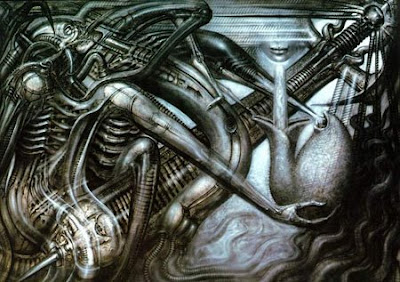
...Thus far these beyond
Compare of mortal prowess, yet observed
Their dread commander: he above the rest
In shape and gesture stood proudly eminent
Stood like a Tow'r; His form had not yet lost
All her Original brightness, nor appear'd
Less than archangel ruined and th'excess
Of Glory obscur'd: As when the Sun new ris'n
Looks through the Horizontal misty Air
Shorn of his Beams, or from behind the Moon
In dim Eclipse disastrous twilight sheds
On half the Nations, and with fear of change
Perplexes Monarchs. Darken'd so, yet shone
Above them all th'Arch Angel: but his face
Deep scars of Thunder had entrenched, and care
Sat on his faded cheek, but under Brows
Of dauntless courage, and considerate Pride
Waiting revenge: cruel his eye, but cast
Signs of remorse and passion to behold
The fellows of his crime, the followers rather
(Far other once beheld in bliss) condemn'd
For ever now to have their lot in pain,
Millions of Spirits for his fault amerc't
Of Heav'n, and from Eternal Splendors flung
For his revolt, yet faithful how they stood,
Their Glory wither'd. As when Heaven's Fire
Hath scath'd the Forest Oaks, or Mountain Pines,
With singed top their stately growth though bare
Stands on the blasted Heath. He now prepar'd
To speak; whereat their doubl'd ranks they bend
From Wing to Wing, and half enclose him round
With all his Peers: attention held them mute.
Thrice he assay'd, and thrice in spite of scorn,
Tears such as Angels weep, burst forth: at last
Words interwove with sighs found out their way.
"O Myriads of immortal Spirits, O Powers
Matchless, but with th'Almighty, and that strife
Was not inglorious, though th'event was dire,
As this place testifies, and this dire change
Hateful to utter, but what power of mind
Forseeing or presaging, from the Depth
Of knowledge past or present, could have fear'd,
How such united forces of Gods, how such
As stood like these, could ever know repulse?
For who can yet believe, though after loss,
That all these puissant legions, whose exile
Hath emptied Heav'n, shall fail to re-ascend
Self-rais'd, and repossess their native seat.
For me, be witness all the Host of Heav'n,
If counsels different, or danger shunn'd
By me, have lost our hopes, but he who reigns
Monarch in Heav'n, till then as one secure
Sat on his throne, upheld by old repute,
Consent or custom, and his Regal State
Put forth at full, but still his strength conceal'd,
Which tempted our attempt, and wrought our fall.
Hence forth his might we know, and know our own
So as not either to provoke, or dread
New war, provok't, our better part remains
To work in close design, by fraud or guile
What force elected not: that he no less
At length from us may find, who overcomes
By force hath overcome but half his foe.
Space may produce new Worlds; whereof so rife
There went a fame in Heav'n that he ere long
Intended to create, and therein plant
A generation, whom his choice regard
Should favor equal to the Sons of Heav'n:
Thither, if but to pry, should be perhaps
Our first eruption, thither or elsewhere:
For this Infernal Pit shall never hold
Celestial Spirits in Bondage, nor th'Abyss
Long under darkness cover. But these thoughts
Full counsel must mature: Peace is despair'd,
For who can think Submission? War then, War
Open or understood must be resolv'd."
He spake: and to confirm his words, out-flew
Millions of flaming swords, drawn from the thighs
Of mighty Cherubim: the sudden blaze
Far round illumin'd hell: High they rag'd
Against the Highest, and fierce with grasp'd arms
Clash'd on their sounding shields the din of war,
Hurling defiance toward the vault of Heav'n.
(
Paradise Lost 1:587-669. Image of
Gustave Doré's woodcut from
www.all-art.org)











































